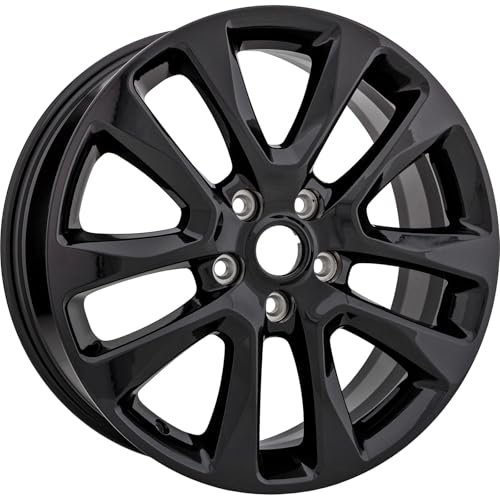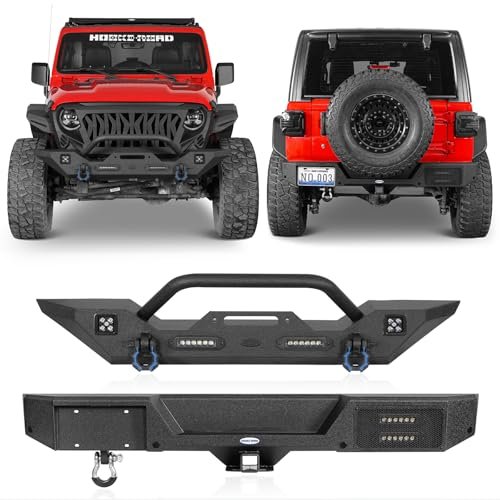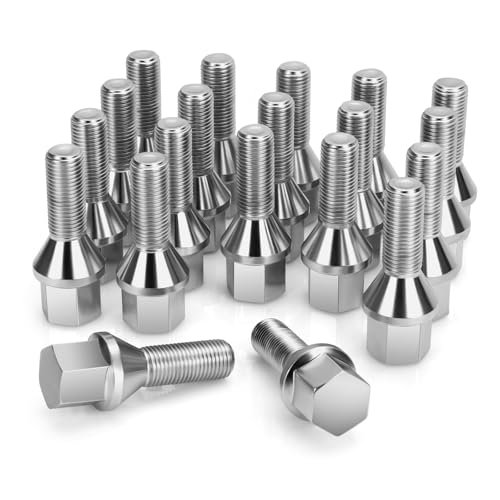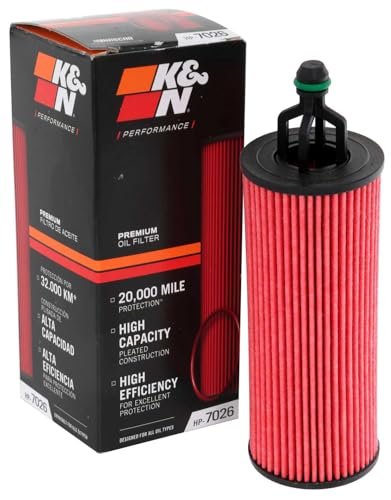To add coolant to a Jeep Wrangler, locate the coolant reservoir and remove the cap. Pour coolant, a 50/50 mixture of antifreeze and water, into the reservoir until it reaches the appropriate level indicated on the reservoir.
Determine The Coolant Level
It is important to determine the coolant level in your Jeep Wrangler to ensure proper maintenance. Before checking the coolant level, make sure the engine is cool to avoid any injuries. Start by locating the coolant reservoir, which is typically a translucent plastic container with a cap labeled “coolant”.
Next, remove the cap and visually inspect the level of the coolant. There are usually markings on the side of the reservoir indicating the appropriate range. Ensure that the coolant level is within this range. If the coolant level is below the minimum mark, it is necessary to add more coolant.
To add coolant, carefully pour it into the reservoir until the level reaches the maximum mark. Be cautious not to overfill the reservoir, as it may result in overflow when the engine is heated. Once the coolant level is appropriate, securely fasten the cap back onto the reservoir. Finally, double-check that the cap is tightly closed to prevent any leakage during operation.
Select The Correct Coolant Type
When it comes to adding coolant to your Jeep Wrangler, it is important to select the correct coolant type. To determine the required coolant type for your Jeep Wrangler, refer to the owner’s manual or manufacturer’s recommendations. These sources will provide you with the specific coolant type that is recommended for your vehicle. It is crucial to use the correct coolant to ensure optimal engine performance and prevent any potential damage. Using the wrong coolant type can lead to engine overheating or corrosion. Therefore, take the time to identify the appropriate coolant type before adding it to your Jeep Wrangler. By following the manufacturer’s guidelines, you can ensure that the coolant you add is compatible with your vehicle and provides the necessary protection for your engine.
Prepare To Add Coolant
- Safety gear: Put on gloves and goggles before starting the process.
- Coolant: Make sure you have the recommended type and quantity of coolant for your Jeep Wrangler.
- Coolant funnel: This will help you pour the coolant into the radiator without spilling it.
- Distilled water: Mix the coolant with distilled water as per the manufacturer’s instructions if required.
- Owner’s manual: Keep your Jeep Wrangler’s owner’s manual handy for reference.
Once you have all the necessary tools and supplies ready, you can proceed with adding coolant to your Jeep Wrangler. Remember to follow the recommended guidelines provided in the owner’s manual to ensure the correct coolant levels and avoid any potential damage to your vehicle’s engine.
Locate The Coolant Reservoir And Cap
To add coolant to your Jeep Wrangler, start by opening the hood of your vehicle. Locate the coolant reservoir, which is usually a translucent plastic tank near the front of the engine compartment. Once you have found the reservoir, find the cap on the top of the reservoir and remove it.
Before opening the cap, make sure the engine of your Jeep Wrangler is cool to avoid any potential burns. Check the coolant level in the reservoir by looking at the markings on the side. If the coolant level is low, you can add coolant to the reservoir.
Pour the coolant slowly into the reservoir until it reaches the MAX or FULL line. Be careful not to overfill. Once you have added the coolant, replace the cap securely. It is important to use the recommended type of coolant for your vehicle, as specified in the owner’s manual.
Regularly checking and maintaining the coolant level in your Jeep Wrangler will help keep the engine running smoothly and prevent overheating issues. Make sure to consult the vehicle’s manual for any specific guidance or instructions.
Open The Coolant Reservoir Cap
When adding coolant to your Jeep Wrangler, it’s important to follow the proper steps to ensure a smooth process. One of the first steps is to open the coolant reservoir cap. Before doing so, it’s essential to inspect the cap for any signs of pressure or heat. This will help you determine if there is a build-up of pressure that needs to be released before opening the cap.
If everything looks normal, carefully remove the cap to release any built-up pressure. This step is crucial to prevent any injuries that may occur due to the sudden release of pressure. Once you’ve released the pressure, you can proceed to add the coolant to the reservoir. Make sure to pour it slowly and steadily to prevent overflow. It’s also important to use the correct type of coolant recommended for your Jeep Wrangler.
Remember to always refer to your vehicle’s manual for specific instructions and safety precautions when performing any tasks related to coolant maintenance. By following these steps, you can effectively add coolant to your Jeep Wrangler and ensure optimal performance and longevity of your vehicle.

Credit: www.wranglerforum.com
Add Coolant To The Reservoir
To add coolant to your Jeep Wrangler, start by locating the reservoir. Slowly pour the coolant into the reservoir, being cautious not to overfill it. Continue pouring until the coolant reaches the desired level. Make sure to use a funnel to avoid any spills. Once the coolant is added, securely tighten the reservoir cap. It’s important to regularly check the coolant level to ensure that your engine stays cool and functions properly. Proper coolant levels help prevent overheating, which can lead to severe engine damage. Maintaining the coolant level in your Jeep Wrangler is an essential part of its regular maintenance routine. By adding coolant when necessary, you can help keep your engine running smoothly and extend its lifespan.
Close The Coolant Reservoir Cap
Adding coolant to your Jeep Wrangler is a simple process that can help maintain the proper operating temperature of your engine. One important step in this process is to close the coolant reservoir cap securely. After you have filled the reservoir with the recommended coolant, take care to firmly tighten the cap back onto the reservoir. This is essential to ensure that the system is properly sealed and prevent any potential leaks. It is also a good practice to check the cap regularly for any signs of wear or damage, as a faulty cap can lead to coolant loss and overheating. By following these steps, you can easily add coolant to your Jeep Wrangler and keep your engine running smoothly.
Check For Any Leaks
In order to Add Coolant to your Jeep Wrangler, you need to first check for any leaks. Start by inspecting the surrounding area for any signs of coolant leaks. Look for any puddles or stains under the vehicle. If you do find any leaks, it is important to address them before proceeding with adding coolant. Leaks can indicate a problem with the radiator or hoses, which should be fixed before adding more coolant.
Start The Engine And Check Coolant Levels
Start by starting the engine and letting it run for a few minutes. This is important to ensure that the engine reaches its normal operating temperature. After a few minutes, monitor the coolant level to assess if it is at the desired level. To do this, you can refer to the coolant reservoir tank located in the engine compartment. If the coolant level is low, you will need to add more coolant. Gently remove the cap from the coolant reservoir tank and slowly pour the coolant until it reaches the recommended level. It is crucial to be cautious and avoid overfilling. Once you have added the coolant, securely tighten the cap back onto the coolant reservoir tank. This process should be carried out regularly to maintain the cooling system’s efficiency and prevent any potential engine overheating issues.
Dispose Of The Old Coolant Properly
Safely disposing of old or excess coolant is an essential step in maintaining your Jeep Wrangler’s cooling system. This not only helps protect the environment but also ensures the longevity of your vehicle. To properly dispose of coolant, it’s crucial to check local regulations as each area may have different guidelines. Here are a few general steps to follow:
- Allow the coolant to cool down completely.
- Transfer the coolant into a sealable container, such as a plastic jug or a coolant recycling kit.
- Label the container clearly to avoid confusion.
- Contact your local waste management facility or recycling center to inquire about their coolant disposal procedures.
- Follow their instructions on how to drop off the coolant safely and legally.
Remember, improperly disposing of coolant can harm the environment, so it’s vital to follow proper disposal methods to protect both nature and your community.
Maintenance Tips For Cooling System
The cooling system is an essential component of your Jeep Wrangler that helps prevent overheating and damage to the engine. Regularly checking the coolant levels is crucial in maintaining optimal performance. If the levels are low, topping up the coolant is necessary to ensure proper functioning. It is advisable to schedule a coolant flush and replacement as recommended by the manufacturer to keep the system clean and prevent corrosion. The frequency of coolant flushes and replacements may vary depending on the vehicle model and usage. By following these maintenance tips, you can enhance the longevity and efficiency of your Jeep Wrangler’s cooling system.
Frequently Asked Questions Of How To Add Coolant To Jeep Wrangler
What Coolant To Use In Jeep Wrangler?
Use a coolant designed for your Jeep Wrangler, like Mopar® Coolant or a compatible coolant with the same specifications. It’s essential to use the correct coolant to ensure proper engine performance and prevent damage. Check your vehicle’s manual or consult a professional for specific recommendations.
Can You Add Coolant By Yourself?
Yes, you can add coolant by yourself. Simply locate the coolant reservoir and pour the coolant mixture into it slowly. Make sure the engine is cool before opening the reservoir cap.
Do Jeeps Require Special Coolant?
No, jeeps do not require special coolant. Regular coolant that meets the specifications outlined in the vehicle’s owner’s manual is sufficient. Make sure to follow the manufacturer’s recommendations for coolant type and maintenance.
How Do I Add Coolant To My Jeep Wrangler?
To add coolant to your Jeep Wrangler, start by locating the coolant reservoir under the hood. Remove the cap and pour the coolant mixture into the reservoir until it reaches the maximum fill line. Be careful not to overfill. After adding coolant, replace the cap securely.
Conclusion
To wrap up, adding coolant to your Jeep Wrangler is a relatively simple task that can help ensure the optimal performance of your vehicle’s engine. By following the step-by-step process outlined in this blog post, you can avoid potential overheating issues and keep your Jeep running smoothly on the road.
Remember to always consult your vehicle’s manual for specific instructions and safety precautions. With regular coolant maintenance, you can enjoy many more adventurous miles in your Jeep Wrangler.







